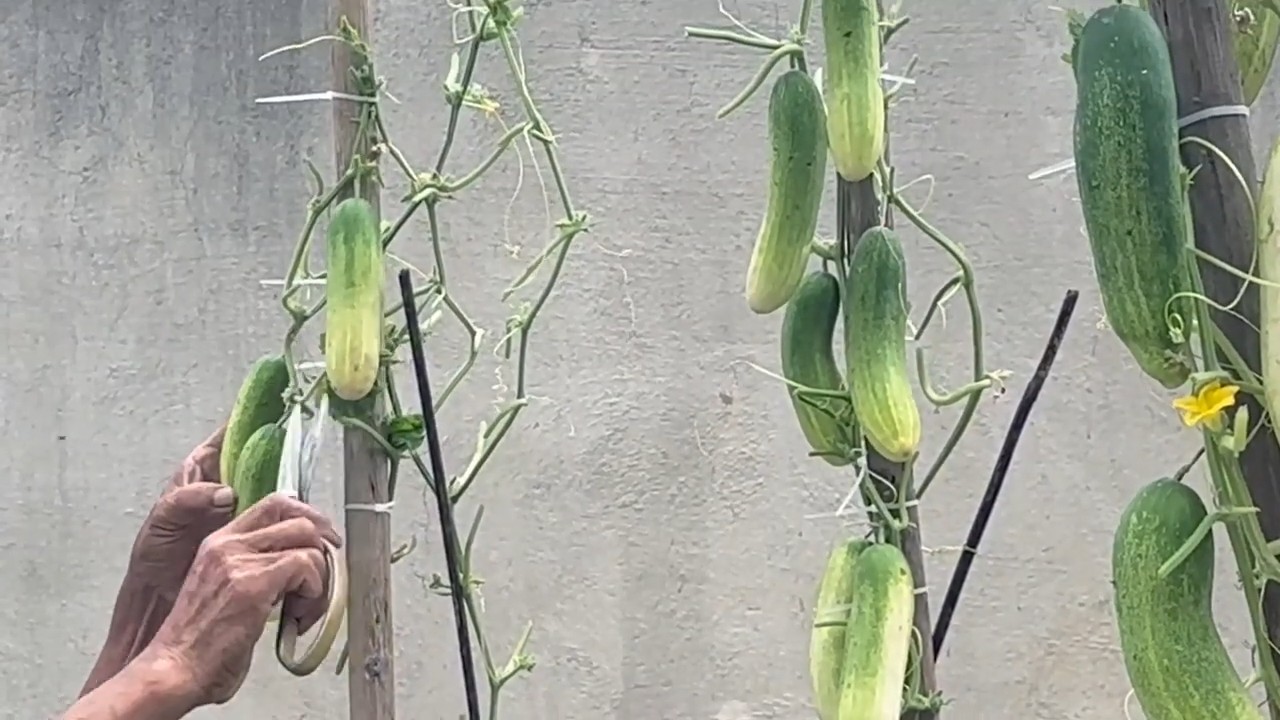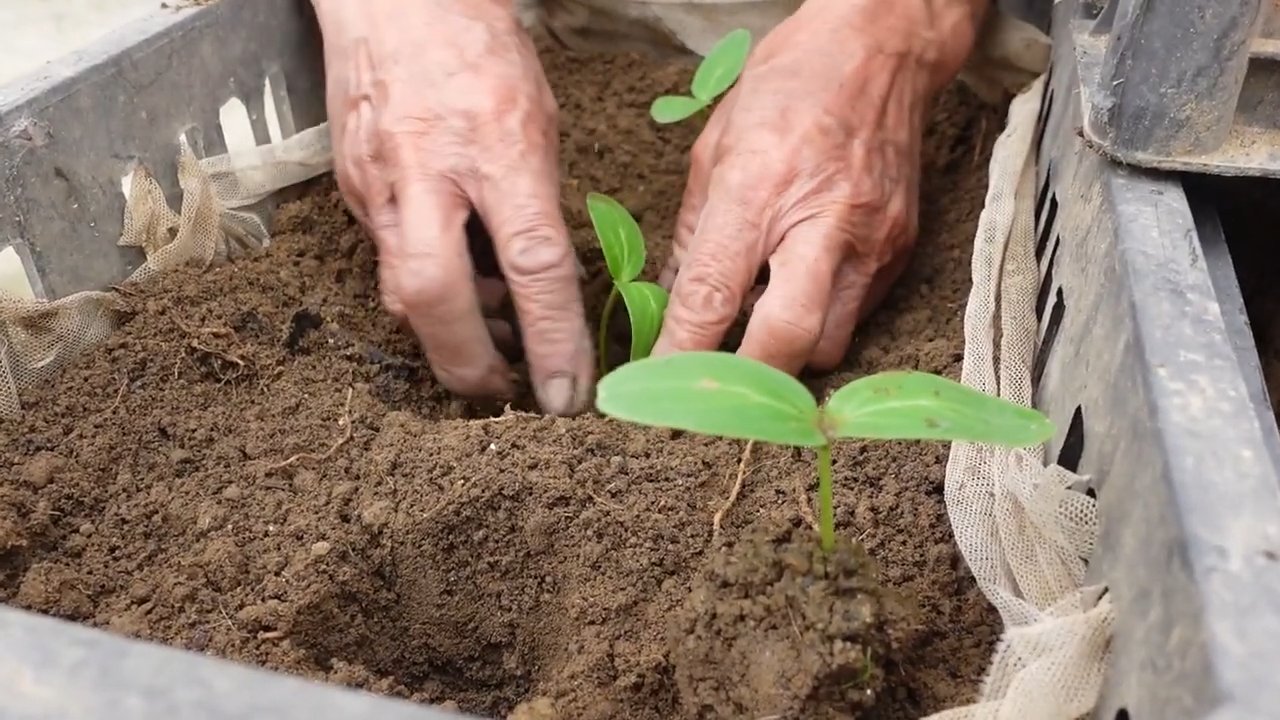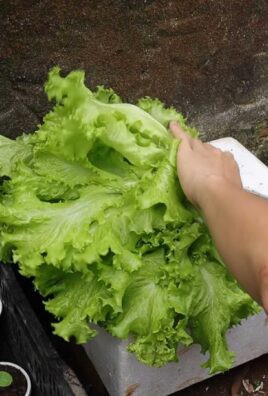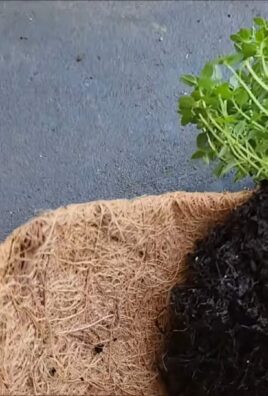High yield cucumber mistakes are more common than you might think, even among seasoned gardeners! Have you ever dreamt of a summer overflowing with crisp, juicy cucumbers, only to be met with a disappointing harvest of stunted, bitter, or simply *few* cucumbers? I know I have! It’s frustrating, isn’t it? But don’t worry, you’re not alone, and more importantly, you’re in the right place to turn things around.
Cucumbers have been cultivated for over 3,000 years, originating in India and spreading throughout the world. They’ve been a staple in diets and even folklore for centuries! From ancient remedies to refreshing summer salads, cucumbers hold a special place in our culinary history. But even with all that history, achieving a truly abundant cucumber harvest can be tricky.
That’s why I’ve put together this guide to help you avoid the most common high yield cucumber mistakes. We’ll dive into the simple DIY tricks and hacks that can make all the difference between a sparse picking and a cucumber bonanza. Whether it’s understanding the importance of proper pollination, avoiding over-watering, or choosing the right fertilizer, these tips will empower you to grow the cucumber crop of your dreams. Get ready to transform your garden and enjoy a summer filled with delicious, homegrown cucumbers!

Cucumber Harvest Booster: Avoid These Beginner Mistakes for a Record Harvest!
Hello dear garden friends! I am so excited to share my best tips and tricks for a bountiful cucumber harvest with you today. Cucumbers are really rewarding plants, but there are a few stumbling blocks that can lead to a meager yield. Don’t worry, I’ll help you avoid these mistakes and make your cucumbers explode!
The Most Common Mistakes in Cucumber Cultivation (and how to avoid them!)
Before we go into detail, here is a brief overview of the most common mistakes that I myself (and many other gardeners) have made:
- Wrong variety choice: Not every cucumber variety is suitable for every location.
- Poor location: Cucumbers love sun and warmth!
- Incorrect watering: Too little or too much water can be fatal.
- Lack of nutrients: Cucumbers are hungry plants!
- Missing trellis/support: Cucumbers need support to grow optimally.
- Neglecting the harvest: Regular harvesting encourages production.
- Diseases and pests: Early detection and control are important.
- Incorrect sowing/planting: Too early or too late can reduce the yield.
- Insufficient pollination: A problem especially with greenhouse cucumbers.
- Ignoring side shoots: Pruning can increase the harvest.
Cucumber Harvest Booster: Step-by-Step Guide for a Record Harvest
Now I’ll show you how to avoid these mistakes and get your cucumbers growing!
1. Choose the Right Variety:
The be-all and end-all for a successful cucumber harvest is choosing the right variety. Consider where you want to grow your cucumbers (greenhouse or outdoors) and what type of cucumbers you prefer (slicing cucumbers, pickling cucumbers, mini cucumbers, etc.).
- Outdoor cucumbers: These varieties are more robust and resistant to diseases. Popular varieties include ‘Marketmore’, ‘Delikatess’, or ‘Tanja’.
- Greenhouse cucumbers: These varieties are more sensitive but often produce a higher yield. ‘Dominica’, ‘Printo’, or ‘Serenade’ are good options.
- Pickling cucumbers: These varieties are smaller and firmer, perfect for pickling. ‘Vorgebirgstraube’ or ‘Chinese Snake’ are popular varieties.
- Mini cucumbers: These varieties are ideal for growing in pots or on a balcony. ‘Picolino’ or ‘Bella’ are good choices.
My tip: Read the descriptions of the different varieties carefully and pay attention to information on disease resistance and yield.
2. The Perfect Location:
Cucumbers love the sun! Choose a location that gets at least 6-8 hours of sun per day. The soil should be loose, rich in humus, and well-draining.
- Prepare the soil: Loosen the soil thoroughly and remove weeds. Mix in compost or well-rotted manure to enrich the soil with nutrients.
- Wind protection: Cucumbers are sensitive to wind. A sheltered location is ideal.
- Soil pH: The ideal pH for cucumbers is between 6.0 and 7.0.
My tip: If you don’t have an ideal location, you can also grow your cucumbers in pots or containers. Make sure the container is large enough and has good drainage.
3. Water Correctly:
Proper watering is crucial for a bountiful cucumber harvest. Cucumbers need a lot of water, especially during fruit formation.
- Water regularly: Water your cucumbers regularly, especially in dry weather. The soil should always be slightly moist, but not wet.
- Water in the morning: It’s best to water in the morning so the leaves can dry during the day. This reduces the risk of fungal diseases.
- Don’t water the leaves: Avoid watering the leaves, as this can promote fungal diseases. Instead, water directly at the roots.
- Mulch: Mulch the soil around the cucumber plants with straw or grass clippings. This keeps the soil moist and suppresses weeds.
My tip: Use rainwater for watering. It’s better for the plants and protects the environment.
4. The Right Nutrient Supply:
Cucumbers are hungry plants and need sufficient nutrients to grow optimally and produce many fruits.
- Fertilize: Fertilize your cucumbers regularly with an organic fertilizer or a special cucumber fertilizer.
- Compost: Mix compost into the soil to enrich it with nutrients.
- Nettle tea: Nettle tea (or nettle manure) is an excellent natural fertilizer. Dilute the tea 1:10 with water and water your cucumbers with it.
- Horn shavings: Horn shavings are a slow-release fertilizer that provides the plants with nitrogen.
My tip: Observe your plants closely. If the leaves turn yellow, it could be a sign of a nutrient deficiency.
5. Offer Support:
Cucumbers are climbing plants and need a trellis or support to grow optimally.
- Trellis: A trellis is a simple and effective way to support cucumbers.
- Espalier: An espalier is a sturdier version of a trellis.
- Strings: You can also simply attach strings to a fence or a wall and guide the cucumbers up them.
- Teepee: A teepee made of bamboo poles is a decorative and practical support.
My tip: Regularly guide the cucumber plants along the support structure.
6. Harvest Regularly:
Regularly harvesting encourages the production of new fruits. Don’t let the cucumbers get too big, as they will lose flavor and the plant will put its energy into ripening the existing fruits.
- Harvest time: Harvest the cucumbers when they have reached the desired size and are still firm.
- Cutting: Cut the cucumbers with a sharp knife or scissors. Do not pull on the cucumbers, as you could damage the plant.
- Frequency: It’s best to harvest your cucumbers every few days.
My tip: The more often you harvest, the more cucumbers you will get!
7. Combat Diseases and Pests:
Cucumbers can be affected by various diseases and pests. Early detection and control are important to prevent major damage.
Aphids: Aphids suck on the leaves and weaken the plants. Combat aphids with an insecticide or with home remedies like a soap solution.
*
Powdery Mildew: Powdery mildew is a fungal disease characterized by a white coating on the leaves. Combat mildew with a fungicide or with home remedies like milk or baking soda.
Downy Mildew: Downy mildew is also a fungal disease, characterized by yellowish spots on the leaves. Combat downy mildew with a fungicide.
Cucumber Mosaic Virus: Cucumber mosaic virus is a viral disease that causes mosaic-like patterns on the leaves. There is no direct treatment for the virus. Remove infected plants to prevent it from spreading.

Conclusion
So, there you have it! Avoiding these common pitfalls is the key to unlocking a truly bountiful cucumber harvest. We’ve explored the critical areas where gardeners often stumble, from neglecting soil preparation and spacing to overlooking the importance of consistent watering and proper pollination. Remember, growing cucumbers isn’t just about planting seeds; it’s about understanding their needs and proactively addressing potential problems.
This isn’t just about getting *some* cucumbers; it’s about maximizing your yield and enjoying a season overflowing with crisp, delicious fruits. Imagine the satisfaction of harvesting basket after basket of cucumbers, enough for fresh salads, tangy pickles, and refreshing cucumber water all summer long. That dream is within reach when you avoid these high yield cucumber mistakes.
But don’t just take our word for it. The real magic happens when you put these tips into practice in your own garden. Experiment with different varieties of cucumbers to find the ones that thrive best in your local climate. Consider companion planting with beneficial herbs and flowers to attract pollinators and deter pests. And don’t be afraid to get your hands dirty and learn from your experiences.
Here are a few variations to consider as you embark on your cucumber-growing journey:
* **Vertical Gardening:** If space is limited, try growing your cucumbers vertically on a trellis or fence. This not only saves space but also improves air circulation and reduces the risk of fungal diseases.
* **Container Gardening:** Cucumbers can also be successfully grown in containers, provided they are large enough and have adequate drainage. Choose a bush variety for best results.
* **Succession Planting:** Plant cucumbers in succession every few weeks to extend your harvest season. This will ensure a continuous supply of fresh cucumbers throughout the summer.
* **Grafting:** For advanced gardeners, consider grafting your cucumber plants onto more vigorous rootstocks to improve disease resistance and yield.
We’re confident that by avoiding these common mistakes and embracing a proactive approach, you’ll be well on your way to a bumper crop of cucumbers. Now, it’s your turn! Get out there, plant those seeds, and watch your cucumber dreams come to life. We encourage you to share your experiences, successes, and even your challenges in the comments below. Let’s learn from each other and create a community of thriving cucumber growers! What are you waiting for? Your best cucumber harvest awaits!
Frequently Asked Questions (FAQ)
Q: How often should I water my cucumber plants?
A: Consistent watering is crucial for cucumber growth. Aim to water deeply and regularly, providing about 1-2 inches of water per week, especially during hot and dry periods. Check the soil moisture regularly; it should feel moist but not waterlogged. Avoid overhead watering, as this can promote fungal diseases. Drip irrigation or soaker hoses are excellent options for delivering water directly to the roots. Mulching around the plants can also help retain moisture in the soil. Remember that container-grown cucumbers will likely need more frequent watering than those planted in the ground.
Q: What kind of fertilizer should I use for my cucumbers?
A: Cucumbers are heavy feeders and benefit from regular fertilization. Start with a balanced fertilizer (e.g., 10-10-10) at planting time, following the package instructions. Once the plants begin to produce flowers and fruits, switch to a fertilizer with a higher potassium content (e.g., 5-10-10) to support fruit development. You can also supplement with organic fertilizers like compost tea or fish emulsion. Avoid over-fertilizing, as this can lead to excessive foliage growth at the expense of fruit production. Side-dress your cucumber plants with fertilizer every 2-3 weeks throughout the growing season.
Q: How do I deal with pests and diseases on my cucumber plants?
A: Prevention is key when it comes to pests and diseases. Start by choosing disease-resistant cucumber varieties. Practice good garden hygiene by removing any diseased or dead foliage promptly. Encourage beneficial insects like ladybugs and lacewings to control pests naturally. If you encounter pests like aphids, cucumber beetles, or squash bugs, try using insecticidal soap or neem oil. For fungal diseases like powdery mildew or downy mildew, improve air circulation around the plants and apply a fungicide if necessary. Rotate your crops each year to prevent soilborne diseases from building up.
Q: Why are my cucumber flowers falling off without producing fruit?
A: This is often due to poor pollination. Cucumbers have separate male and female flowers, and the female flowers need to be pollinated in order to produce fruit. If there are not enough pollinators in your garden, you may need to hand-pollinate the flowers. To do this, use a small paintbrush to transfer pollen from the male flowers to the female flowers. You can identify female flowers by the small cucumber-like structure at the base of the flower. Other factors that can contribute to flower drop include stress from heat, drought, or nutrient deficiencies.
Q: How do I know when my cucumbers are ready to harvest?
A: The ideal harvest time depends on the variety of cucumber you are growing. Generally, cucumbers are ready to harvest when they are firm, green, and have reached the desired size for their variety. Check the seed packet or plant tag for specific information. Overripe cucumbers will become yellow, seedy, and bitter. Harvest cucumbers regularly to encourage continued production. Use a sharp knife or pruners to cut the cucumbers from the vine, leaving a short stem attached.
Q: Can I save seeds from my cucumbers for next year?
A: Saving seeds from hybrid cucumber varieties is not recommended, as the offspring may not be true to type. If you are growing heirloom or open-pollinated varieties, you can save seeds, but you need to ensure that the plants are not cross-pollinated with other cucumber varieties. Allow the cucumbers to ripen fully on the vine until they turn yellow or orange. Scoop out the seeds and pulp, and ferment them in a jar of water for a few days to remove the gelatinous coating. Rinse the seeds thoroughly and dry them on a paper towel before storing them in an airtight container in a cool, dry place.
Q: What are some good companion plants for cucumbers?
A: Cucumbers benefit from companion planting with a variety of herbs, flowers, and vegetables. Some good choices include:
* **Marigolds:** Repel nematodes and other pests.
* **Nasturtiums:** Attract aphids away from cucumbers.
* **Dill:** Attract beneficial insects like ladybugs and lacewings.
* **Radishes:** Deter cucumber beetles.
* **Beans:** Fix nitrogen in the soil, benefiting cucumber growth.
* **Corn:** Provides shade and support for vining cucumbers.
Avoid planting cucumbers near aromatic herbs like sage or mint, as they can inhibit cucumber growth.
Q: My cucumber leaves are turning yellow. What could be the problem?
A: Yellowing cucumber leaves can indicate several problems. Overwatering or poor drainage can cause root rot, leading to yellowing leaves. Nutrient deficiencies, particularly nitrogen or magnesium, can also cause yellowing. Pests like spider mites or aphids can suck the sap from the leaves, causing them to turn yellow. Fungal diseases like powdery mildew or downy mildew can also cause yellowing and spotting on the leaves. Inspect your plants carefully to identify the cause and take appropriate action.
Q: How can I improve the flavor of my cucumbers?
A: Several factors can influence the flavor of cucumbers. Choose varieties that are known for their good flavor. Provide consistent watering to prevent bitterness. Harvest cucumbers when they are young and tender. Avoid letting them overripen on the vine. Grow cucumbers in well-drained soil that is rich in organic matter. Some gardeners also believe that adding Epsom salts to the soil can improve the flavor of cucumbers.





Leave a Comment